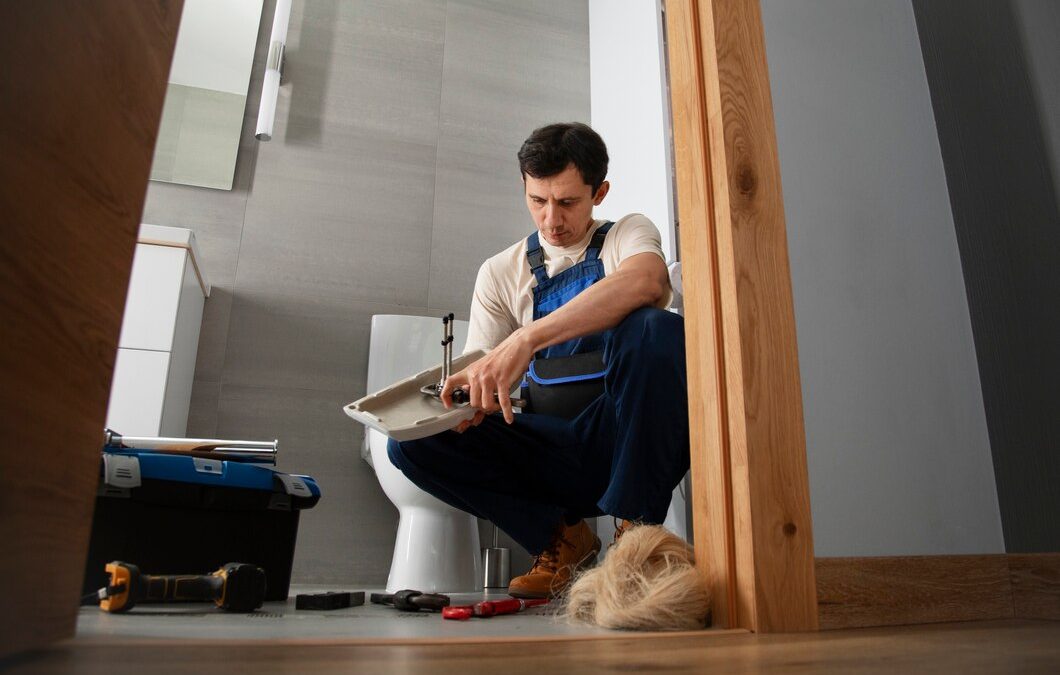Plumbing emergencies at work can cause significant disruptions and damage. Whether it’s a burst pipe, a severe leak, or a clogged drain, knowing how to handle these situations swiftly and effectively is crucial. A prompt response can help minimize the impact on your business operations and prevent costly repairs.
The first step in managing a plumbing emergency is assessing the severity of the problem. Understanding whether it’s a minor issue that can be quickly fixed or a major one requiring immediate professional attention helps in taking the right course of action. Quick assessment allows you to prioritize safety and take steps to reduce any potential damage.
Once the severity is assessed, immediate actions should be taken to control the situation. Simple measures like shutting off the water supply or containing a spill can make a huge difference. These steps help in protecting your property and ensuring the safety of everyone on the premises. After immediate actions, contacting a professional plumber becomes essential for a thorough and lasting solution.
Preventing future plumbing emergencies should also be a focus. Regular maintenance, timely repairs, and employee education can help in avoiding similar issues down the road. Implementing preventive measures ensures your plumbing system remains in good shape, reducing the risk of unexpected disruptions. This proactive approach keeps the workplace safe and running smoothly.
Assessing the Severity of the Plumbing Emergency
When a plumbing emergency hits, the first step is to assess how serious it is. Begin by identifying the source of the problem. Is there visible water damage, or is water leaking from a specific spot? Look for obvious signs like pooling water, dripping fixtures, or strange noises from pipes.
Determine if the problem is minor or major. A small leak from a faucet or a minor drain clog might not need immediate professional help. However, if you see a burst pipe, large water spill, or severe drain blockage, the situation is more serious and needs urgent attention. Knowing the difference helps in deciding on the next steps swiftly.
Consider the potential impact on your business operations. Is the affected area central to daily activities, like a restroom or kitchen? Can the issue lead to significant downtime or safety hazards? If so, it’s crucial to act quickly. Assessing the severity accurately ensures that you prioritize safety while managing the incident effectively.
Immediate Steps to Minimize Damage
Once you’ve assessed the situation, take immediate actions to control the damage. Quick responses can help prevent further issues and keep the work environment safe. Here are some key steps you can take:
1. Turn Off the Water Supply: Locate the main water shut-off valve and turn it off to stop the flow of water. This action prevents more water from leaking and causing additional damage.
2. Contain the Spill: Use towels, mops, or buckets to manage any water spillage. This helps to protect floors, carpets, and furniture from water damage.
3. Unplug Electrical Devices: If water is near electrical appliances or outlets, unplug them to avoid the risk of electrical shock. Safety should be a top priority.
4. Clear the Area: Remove any items that can be damaged by water or that might obstruct your efforts to handle the emergency. Clearing the area makes it easier to address the problem without interference.
5. Identify and Block Drain Points: If the issue involves a sewage backup, block access to affected drains to prevent further contamination. This helps to contain the problem until professional help arrives.
Taking these immediate steps can greatly minimize the damage caused by a plumbing emergency. They allow you to manage the situation effectively while waiting for professional assistance, ensuring the safety and well-being of everyone at work.
Contacting a Professional Plumber
After you’ve taken steps to minimize damage, it’s important to contact a professional plumber to handle the emergency properly. Professional plumbers have the expertise, tools, and experience to fix complex plumbing problems quickly and efficiently.
1. Document the Issue: Before making the call, take note of what you’ve observed. Document the location, type of problem, and steps you’ve taken so far. This information helps the plumber understand the situation better and prepare for the job.
2. Choose the Right Plumber: Make sure to select a commercial plumbing service that specializes in emergency repairs. Check their credentials, experience, and reviews to ensure they are reliable and skilled in handling urgent issues.
3. Provide Clear Directions: When you contact the plumber, provide precise details about the problem and your location within the building. Clear, concise information ensures the plumber arrives prepared and can address the issue more efficiently.
4. Communicate Safety Concerns: If there are any specific safety concerns, such as water near electrical outlets or hazardous spills, inform the plumber right away. Safety is paramount, and your plumber needs to know all potential risks.
By taking these steps, you ensure that a professional plumber can resolve the emergency effectively, minimizing further damage and restoring normal operations as quickly as possible.
Preventive Measures to Avoid Future Emergencies
Preventing future plumbing emergencies requires a proactive approach. By taking preventive measures, you can maintain your plumbing system and avoid unexpected disruptions. Here are some essential steps you can take to keep your plumbing in good condition:
1. Regular Inspections: Schedule regular plumbing inspections to identify and address potential issues before they become emergencies. Inspect pipes, fixtures, and appliances to ensure everything is in good working order.
2. Educate Employees: Train employees on best practices for water usage and plumbing maintenance. Simple habits like not flushing inappropriate items and reporting minor leaks can prevent major problems down the line.
3. Routine Maintenance: Conduct routine maintenance such as cleaning out drains, checking for leaks, and servicing water heaters. Regular upkeep extends the lifespan of your plumbing system.
4. Upgrade Fixtures: Consider upgrading old or inefficient fixtures with modern, water-saving alternatives. This reduces the chance of breakdowns and promotes better water management.
5. Emergency Preparedness: Develop an emergency preparedness plan that includes steps to take in case of a plumbing emergency. Make sure all employees know where the main shut-off valve is and how to reach it.
Taking these preventive measures helps create a reliable plumbing system for your workplace. It minimizes the risk of future emergencies and ensures you’re ready to handle any issues that arise.
Conclusion
Handling a plumbing emergency at work involves a combination of quick thinking, immediate action, and professional expertise. Assessing the severity of the problem, taking steps to minimize damage, and contacting a professional plumber are crucial steps in managing the situation effectively. By taking these actions, you ensure the safety and continuity of your business operations.
Implementing preventive measures can help avoid similar emergencies in the future. Regular inspections, employee education, routine maintenance, upgrading fixtures, and emergency preparedness are essential components of a proactive approach. These strategies help maintain a healthy plumbing system and prevent unexpected disruptions.
If you encounter a plumbing emergency or need professional advice on maintaining your plumbing system, Plumb Krazy Plumbing is here to help. Our team of experts specializes in commercial plumbing services, ensuring your business runs smoothly and efficiently. Contact us today to learn more about how we can assist you with your plumbing needs.

